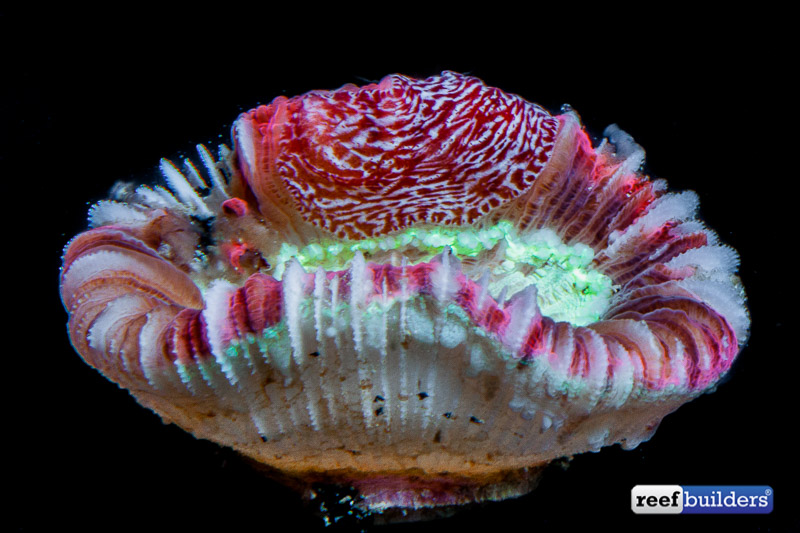Coral flatworms come in a variety of shapes, sizes and colors, but if we find them on our beloved corals, chances are that the flatworm is not doing any good for it. The more corals we keep and see and handle, the more we find that there’s a type of flatworm to parsitize every kind of coral, and our newest discovery is this fascinating Trachyphyllia flatworm.
This particular Trachyphyllia from Fiji arrived in excellent condition but over the course of about two weeks, its color started to fade substantially and then its tissue started showing greatly reduced inflation. The one day we spotted a very odd patch of color on one edge of the Trachy and low and behold, a large and colorful flatworm showed itself in broad daylight.
Most flatworms we encounter tend to have very pale or at least camouflaged coloration on its coral host. This particular specimen might have been well camouflaged when the Trachyphyllia was healthy, with an alternating pattern of red and white stripes which can look very much like the underside of the tissue-skeleton interface of a fully colored Trachyphyllia.

We inspect all corals before picking them up, but sometimes the undesirable koodies can be so well hidden that it’s impossible to see them, especially if you’re not expecting it as in the case of this exotic Trachyphyllia flatworm. However once the coral’s color faded it was much easier to see the uninvited coral predator.
Thankfully, this type of large predatory flatworm is large and not nearly as infectious as the dreaded Acro Eating Flatworm. With a solitary flatworm like this there’s much less chance of there being two individuals to spawn and create and egg mass, and physical removal with a coral dip and or a quick rinse in freshwater is all that’s required to dislodged the unwelcome hitchhiker.
Coral flatworms feast on just about every species in the ocean, if we haven’t seen it it’s probably just a matter of time before a specialist flatworm comes to light to eat that one coral. The ‘discovery’ of this Trachyphyllia flatworm just goes to show that ALL corals should be conditioned and inspected before being placed in the home aquarium and you really can’t be too careful about disinfecting corals with a trusted coral dip.



